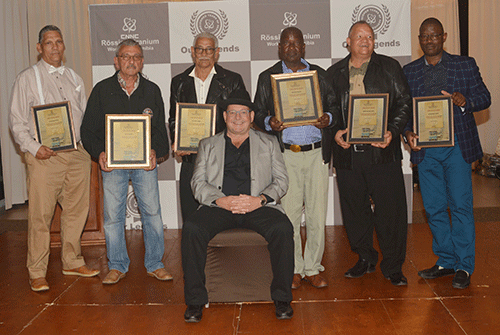Namibia surpassed Australia and Canada in 2021 to become the world’s second largest primary producer of uranium oxide.
The country has two significant uranium mines (Rössing Uranium and Swakop Uranium, after the Langer Heinrich Uranium mine was placed on care and maintenance during 2018), which together provide 12% of the world’s uranium oxide output.
These figures were confirmed by Rössing Uranium’s managing director Johan Coetzee on Wednesday at the launch of 2021 Rössing Uranium’s report to stakeholders.
In 2021, Rössing Uranium produced 5.1% of the world’s output.
Coetzee stated Rössing mined 20.7 million tonnes of material in 2021, which is 7% more than 2020, of which 10 million tonnes was ore (9% more than 2020), with waste and low-grade ore being 10.7 million tonnes and 0.2 million tonnes of waste dumped in the pit.
In total, Rössing Uranium produced 2882 tonnes of uranium oxide, which is 393 tonnes more than the 2020 production.
The latest financials show that Rössing’s revenue was lower than 2020 by 6%, with 11% increase in sales volume year-on-year.
Total revenue amounted to N$4.26 billion, compared to N$4.52 billion in 2020.
Furthermore, net profit after tax from normal operations amounted to N$193 million, compared to N$443 million in 2020.
The impact of the exchange rate, combined with cost pressure, resulted in this reduced net profit.
“Rössing remains committed to supporting local suppliers. During previous years, most of the procurement expenditure was on local suppliers, amounting to N$2.25 billion or 75% of total procurement expenditure,” said Coetzee.
Life-of-mine extension project
According to Coetzee, funds were made available to conduct a feasibility study to extend Rössing’s life-of-mine.
“A project team was appointed to conduct the study, which will be completed by mid-2022. The project will inform an investment decision by the end of 2022 that will consider several aspects, such as the extension of the current open pit and the tailings storage facility as well as the processing plant and infrastructure upgrades required to sustain production beyond,” the MD elaborated.
At the same occasion, mines deputy minister Kornelia Shilunga said the ministry, through its vision and strategic mission, provides access to Namibia’s geological, mineral and energy resources for sustainable economic growth, equal benefit and prosperity to all Namibian citizens.
This, she said, is with a core focus on promoting the optimal exploitation of Namibia’s mineral resources and integrating the mining industry with other sectors of the economy for the overall socio-economic development of the country.
The deputy minister further applauded the mine for the majority of the procurement expenditure spent on Namibian registered suppliers.
– mndjavera@nepc.com.na


